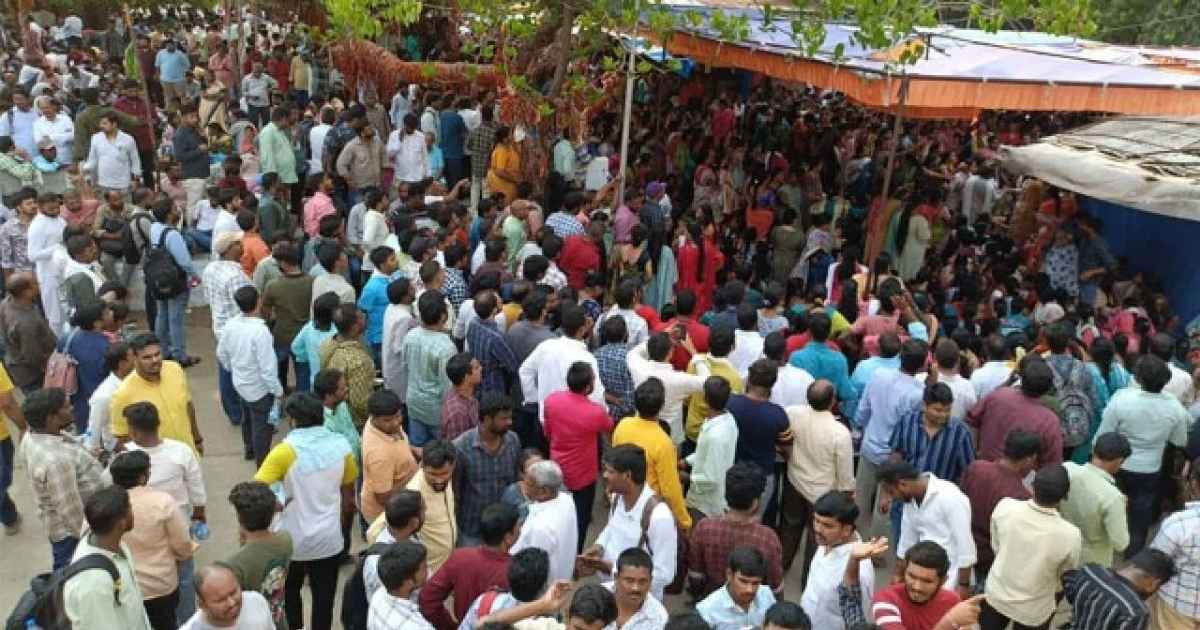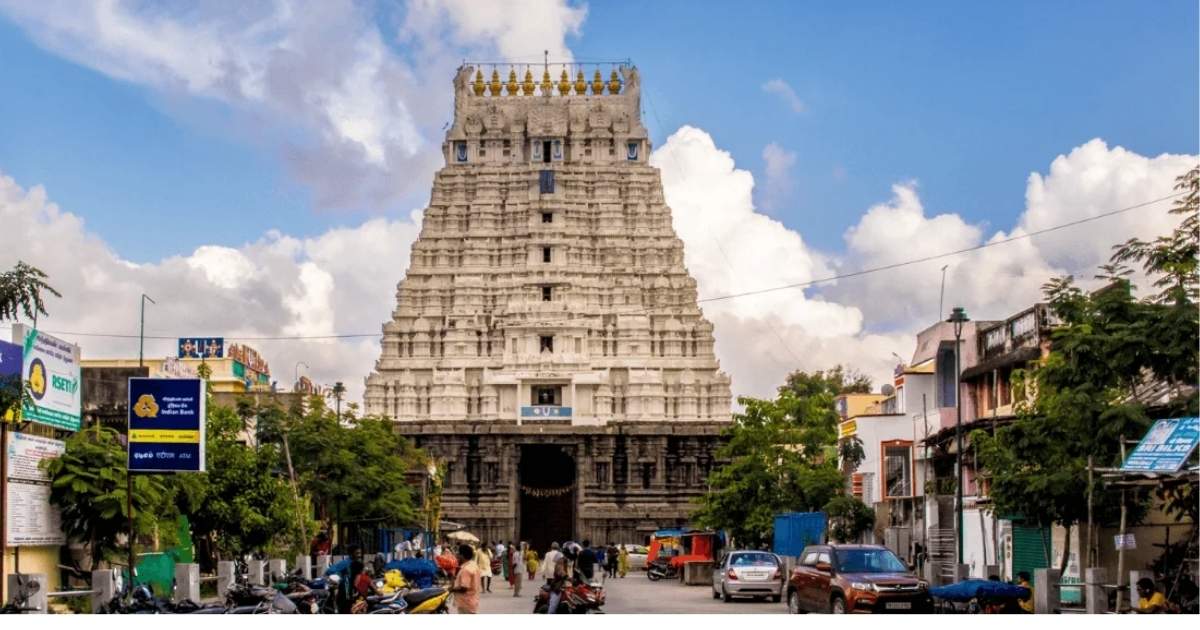Ever feel like you’ve seen every famous temple and still haven’t found that one place that truly stirs something inside you? Maybe you’re craving a peaceful, lesser-known gem with real spiritual energy ,something ancient, powerful, and still untouched by crowds. That’s exactly what I was thinking when I first heard about SriMukhalingam, a temple locals call the “Varanasi of South India.” Intrigued? You’re not alone.
In this post, you’ll uncover everything about SriMukhalingam,its breathtaking architecture, mysterious legends, festive traditions, and travel tips to help you plan a memorable visit. Whether you’re a history buff, a spiritual seeker, or just someone looking for an offbeat destination in Andhra Pradesh, this guide has you covered. Let’s dive into what makes this sacred site so special.
Srimukhalingam
Tucked away in the serene village of Mukhalingam in Andhra Pradesh, SriMukhalingam is more than just a temple,it’s an experience. Often referred to as Dakshina Kashi or the Varanasi of South India, this sacred site draws pilgrims and explorers alike with its deep spiritual roots and quiet charm. Unlike more commercialized temples, it offers a peaceful, authentic connection to the divine, surrounded by natural beauty and historical intrigue.
What sets SriMukhalingam apart is the powerful aura that greets you the moment you step into the temple complex. With the Vamsadhara River gently flowing nearby and ancient stone carvings whispering stories of the past, every corner feels alive with meaning. It’s not just a Shiva temple,it’s a living testament to the region’s history, faith, and architectural brilliance.
History of Sri Mukhalingam Temple
The origins of SriMukhalingam date back to the 9th and 10th centuries when the Eastern Ganga dynasty ruled over parts of what is now coastal Andhra Pradesh. Kings like Kāmārnava–II and Dānārnava were instrumental in commissioning the temple, originally called Madhukeswara Temple, in honor of Sri Madhukeswara Swamy, a form of Lord Shiva. Over time, the temple became a major spiritual and cultural center, earning its revered title as the Dakshina Kashi.
As the kingdom expanded under rulers like Anantavarman Cōdaganga, the temple complex grew both in size and prominence. Stone inscriptions and sculptures hint at the region’s vibrant past, while the Kalinga Ganga dynasty’s influence is evident in the temple’s architectural style and iconography. What began as a royal project evolved into a beloved pilgrimage site in South India, attracting sages, scholars, and worshippers for centuries.
The Architectural Wonder of Sri Mukhalingam Temple

Built during the reign of the Eastern Ganga dynasty, the temple at SriMukhalingam stands as a striking example of Indo-Aryan architecture in South India. Its detailed stone carvings, towering vimanas, and symmetrical temple layout reflect the artisanship and spiritual symbolism of a bygone era. The temple complex, comprising three shrines dedicated to Sri Madhukeswara Swamy, Someswara, and Bhimeswara, showcases a fusion of form and devotion rarely seen in temples this far south.
One of the temple’s most captivating features is the Shiva Lingam with a face,a rare and unique representation of Lord Shiva that immediately captures attention. The sculpted figures, mythological motifs, and remnants of inscriptions reveal the temple’s role not just as a place of worship but as a historic archaeological site in Andhra Pradesh. Declared a protected monument by the ASI, this architectural gem continues to inspire awe and curiosity among historians, devotees, and curious travelers alike.
The Legend of the Golem (Huge Mud Pot)
Among the many intriguing tales tied to SriMukhalingam, the story of the Golem,a huge mud pot believed to possess mystical power,stands out as a local legend passed down for generations. Villagers speak of the Naganna mud pot legend, in which a devoted potter named Naganna crafted a massive clay vessel during a time of drought. Legend says that this pot, placed near the temple, began miraculously collecting water from the Vamsadhara River, sustaining the village when hope was nearly lost.
While there’s no formal archaeological record of the Golem itself, the tale is deeply rooted in the spiritual identity of the temple and reflects the region’s blend of myth, devotion, and survival. Much like the sacred fossilized Madhuka tree nearby, the mud pot story symbolizes resilience and divine intervention, making SriMukhalingam not just a historical place but a vessel of living folklore that still shapes the local faith and imagination.
Festivals and Events at Sri Mukhalingam Temple

Every year, SriMukhalingam comes alive with color, music, and spiritual fervor during major festivals that draw thousands of devotees. The most significant celebration is Maha Shivaratri, when pilgrims from all over South India gather to offer prayers to Lord Shiva and participate in night-long rituals. Another sacred event is the Chakratirtha snanam, a ritual bath taken in the Vamsadhara River, believed to cleanse sins and purify the soul.
These festivals aren’t just religious ceremonies,they’re deeply woven into the cultural fabric of the region. From traditional dances to temple fairs and food stalls, the atmosphere is vibrant and welcoming. The temple also hosts smaller celebrations and processions throughout the year, making it a hub of continuous devotion and festivity. Whether you’re seeking spiritual connection or cultural immersion, the festivals at SriMukhalingam offer an unforgettable experience.
Tourist Attractions Near Sri Mukhalingam Temple
If you’re planning a visit to SriMukhalingam, you’re in for more than just a temple tour,this region is full of hidden gems worth exploring. Just a short drive away, the Arasavalli Sun Temple, dedicated to the Sun God, offers a unique architectural experience and is one of the very few sun temples still active in India. Not far from there is the Sri Kurmanatha Swamy Temple, famous for its rare Kurma (tortoise) incarnation of Lord Vishnu, attracting pilgrims from all over the country.
Nature and history lovers will appreciate the peaceful charm of Kalingapatnam Beach, where the river meets the sea, and the lesser-known Salihundam Buddhist Stupas, an ancient archaeological site perched above the Vamsadhara River. Each location offers its own blend of serenity, spirituality, and storytelling, making the area around SriMukhalingam a perfect itinerary for both the curious traveler and the devout pilgrim.
Best Time to Visit
The ideal time to visit SriMukhalingam is between October and March, when the weather in Andhra Pradesh is pleasantly cool and perfect for temple exploration. During these months, the heat is manageable, and the surrounding greenery along the Vamsadhara River makes the experience even more scenic. The peaceful village atmosphere adds a calm rhythm to your journey, letting you take in the temple’s beauty without the discomfort of extreme temperatures.
If you want to witness the temple in its most festive spirit, plan your trip around Maha Shivaratri, usually held in February or March. This is when SriMukhalingam transforms into a hub of spiritual activity, with rituals, music, and a massive influx of devotees. Whether you’re here for history, worship, or quiet reflection, timing your visit right can truly elevate your experience.
If you’re planning a visit to SriMukhalingam, here are your best accommodation options:
- Local Guesthouses & Temple Lodges
- Located near the temple complex
- Offer basic rooms with essential facilities
- Ideal for early morning temple visits and spiritual stays
- Budget-friendly and often run by locals or the temple trust
- Located near the temple complex
- Hotels in Nearby Towns (Srikakulam, Tekkali)
- Slightly more amenities and comfort
- Easily accessible by road
- Good for families or small groups
- Usually under an hour’s drive from SriMukhalingam
- Slightly more amenities and comfort
- Comfort Stays in Visakhapatnam (Vizag)
- Wide range of hotels from budget to luxury
- Suitable for travelers who want modern comforts
- Located around 120 km away, with smooth road connectivity
- Wide range of hotels from budget to luxury
No matter where you stay, the region’s calm and spiritual energy makes the journey to SriMukhalingam well worth it.
Must visit : Vanjangi Viewpoint Exclusive: An Ultimate and Scenic Beauty
How to Reach Sri Mukhalingam Temple
Getting to SriMukhalingam is fairly easy, thanks to its good connectivity with nearby towns and transport hubs. Whether you prefer road, rail, or air travel, there are multiple routes to reach this sacred site in Srikakulam district, Andhra Pradesh.
By Road:
- Well-connected by highways from major towns like Srikakulam, Tekkali, and Palasa
- Regular buses and private taxis are available from nearby towns
- Roads are in decent condition, making it a smooth drive for personal vehicles
By Train:
- Nearest major railway station: Srikakulam Road Railway Station (CHE)
- From there, taxis and buses are available to reach Mukhalingam village
- Station is connected to Visakhapatnam, Vizianagaram, and other regional hubs
By Air:
- Closest airport: Visakhapatnam Airport (Vizag), about 120 km away
- From the airport, you can hire a taxi or take a train to Srikakulam, then continue by road
- Ideal for travelers coming from distant cities or other states
Whichever route you choose, the journey offers scenic views of rural South India, making the visit to SriMukhalingam both peaceful and memorable.
Read must : Snow World Hyderabad: Beat the Heat in a Winter Wonderland!
Conclusion
SriMukhalingam isn’t just a temple ,it’s a living piece of history, faith, and local legend nestled in the heart of Andhra Pradesh. From its rare Shiva Lingam with a face to the ancient stories like the Golem mud pot, every stone here tells a story that connects past to present in a deeply spiritual way.
Whether you’re a history lover, a spiritual seeker, or a curious traveler, this sacred site offers more than just sights,it offers a feeling. A quiet power, a sense of wonder, and a journey that stays with you long after you’ve left. So if you’re looking for a destination that blends myth, devotion, and peace, SriMukhalingam is exactly where you need to go.
FAQs
Where is SriMukhalingam located?
SriMukhalingam is located in Mukhalingam village, Jalumuru Mandal, in the Srikakulam district of Andhra Pradesh, near the banks of the Vamsadhara River.
Why is it called the Varanasi of South India?
The temple is often referred to as the Varanasi of South India or Dakshina Kashi because of its deep spiritual significance and the presence of a Shiva Lingam.
What is special about the Shiva Lingam here?
The Shiva Lingam at SriMukhalingam is believed to be unique, as it features a face carved on it, which is extremely rare in temple traditions.
Is there an entry fee to visit the temple?
No, entry to the temple is free for all visitors. However, donations are accepted, and some special rituals or darshans may have a small fee.
Can tourists visit other attractions nearby?
Yes! You can also explore nearby sites like the Arasavalli Sun Temple, Sri Kurmanatha Swamy Temple, Salihundam Buddhist Stupas, and Kalingapatnam Beach.

With over five years of experience in crafting engaging and insightful content, I’m the creator of TravelLeeps.com; a travel blog dedicated to inspiring journeys, practical tips, and unforgettable destinations around the globe.


